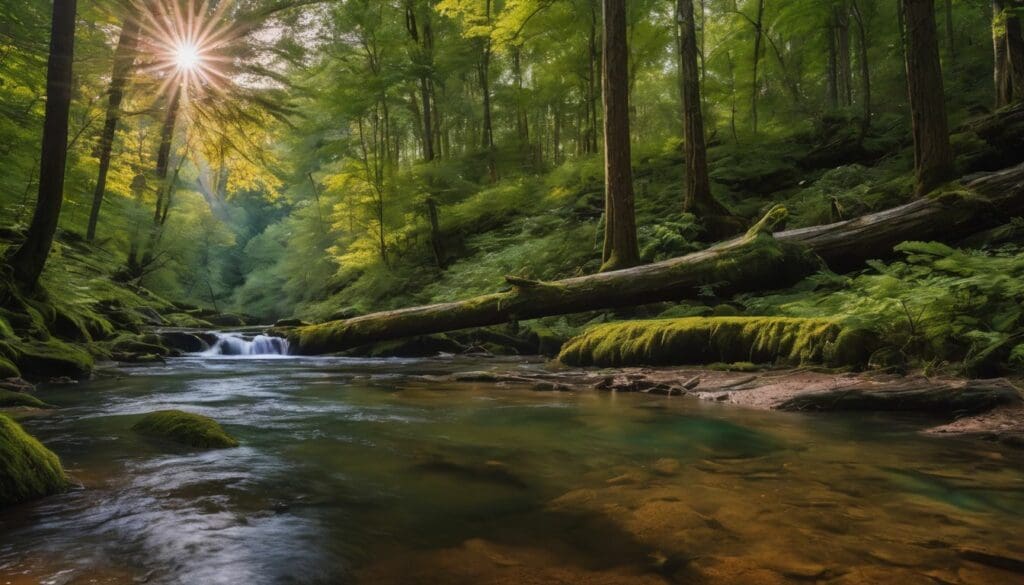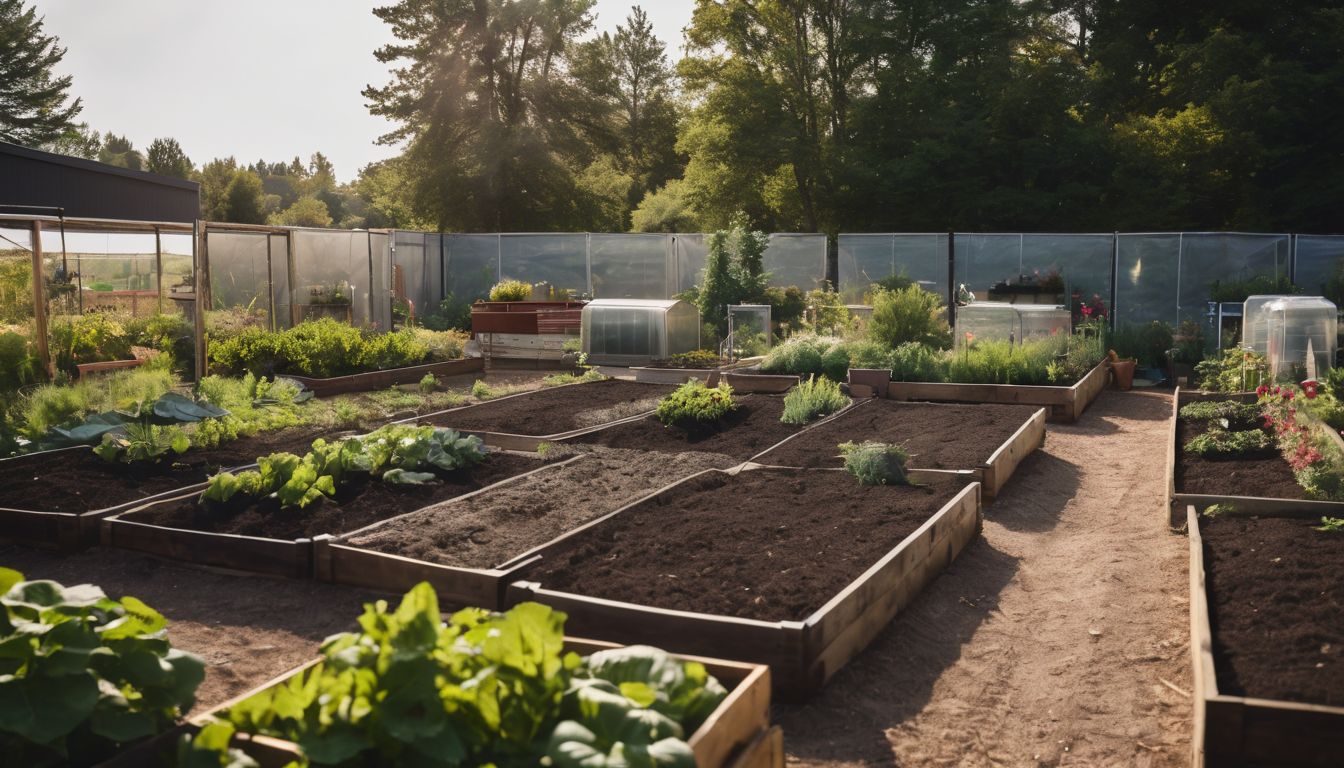In today’s tech-dominated era, it’s become increasingly tricky to entice children away from screens and into the embrace of nature. We’re all too familiar with this predicament, yet did you know that when little ones are immersed in natural surroundings, their level of engagement doubles? Our forthcoming article is brimming with handy advice for arranging educational nature walks that will not only captivate young minds but also impart valuable knowledge about the world around them.
Join us as we explore a treasure trove of discovery waiting just a stone’s throw from the classroom door!
Key Takeaways
- Educational nature walks allow learners to engage all their senses, which helps them connect deeply with the environment. This connection enhances learning and fosters appreciation for ecosystems.
- Tailoring activities to match the abilities and interests of participants makes nature walks inclusive and ensures everyone gains from the experience.
- Nature – based art activities during walks spark creativity while science experiments conducted in a natural setting deepen understanding of ecological principles.
- Integrating outdoor educational experiences like nature walks into classroom curricula strengthens connections between academic concepts and real-world environmental interactions.
- Reflecting on and documenting experiences through journals, discussions, or art after nature walks solidify learnings and encourage ongoing engagement with environmental education.
The Benefits of Educational Nature Walks
Educational nature walks encourage observation with all senses and promote learning about the natural world. They also reduce stress, improve mental well-being, and increase physical activity.
Encourages observation with all senses
As we stroll through lush forests or wander along the riverbanks, we tune into nature’s symphony, engaging every sense. We listen to the rustle of leaves, inhale the earthy scent of damp soil and touch the rough bark of ancient trees.
Eyes scan for flashes of wildlife; tongues can taste the freshness in the air. This multisensory engagement deepens our connection with our surroundings and sharpens our ecological awareness.
We feel a renewed appreciation for nature’s intricate web, from delicate ecosystems to mighty landscapes. Every outdoor excursion becomes a chance to discover something new about our environment and ourselves.
Our next step is incorporating such rich experiences into structured learning, transforming walkways into vibrant outdoor classrooms that promote knowledge as well as conservation values.
Promotes learning about the natural world
Engaging in educational nature walks facilitates a deeper understanding of the natural world. Participants experience firsthand how ecosystems function, observing flora and fauna in their natural habitats while learning about interdependence and conservation.
Through this immersive experience, individuals gain environmental awareness and appreciation for the planet’s delicate balance, encouraging them to become stewards of the environment.
Furthermore, exposure to diverse natural elements during these walks fosters curiosity and inquiry, sparking an interest in scientific exploration and nature-based education. This hands-on approach not only supports academic learning but also cultivates a personal connection to nature, nurturing a sense of responsibility towards preserving our planet for future generations.
Integrating outdoor learning experiences into education programmes can significantly enhance environmental literacy, leading to informed decision-making and sustainable practices that benefit both communities and the environment.
Reduces stress and improves mental well-being
Encouraging observation and learning about the natural world through educational nature walks can also have a positive impact on mental well-being, reducing stress and promoting overall mental health.
Immersing oneself in the tranquillity of nature and engaging all senses helps to alleviate tension, providing a therapeutic experience that fosters emotional well-being. Connecting with the outdoors is an effective way to rejuvenate the mind and find solace amidst the beauty of the environment, contributing to a sense of inner peace.
Increasing physical activity while exploring nature further supports mental well-being by releasing endorphins, enhancing mood, and reducing feelings of anxiety or depression. This natural remedy provides individuals with an opportunity to unwind from daily pressures, offering a holistic approach towards attaining optimal mental wellness.
Increases physical activity
Engaging in educational nature walks also encourages physical activity, allowing participants to move and explore the natural environment. This active learning approach enables individuals to experience the benefits of exercise while immersing themselves in outdoor sensory experiences.
By incorporating nature-based activities such as scavenger hunts, exploration, and art and craft sessions using natural materials, individuals can engage in physical movement that fosters a deeper connection with the environment.
When planning nature walks, it’s essential to consider how each activity encourages physical engagement. Activities such as hiking or simply walking through a forest provide opportunities for increased movement which is key to supporting healthy lifestyles and environmental education programs.
Planning and Preparation for Educational Nature Walks
Consider the age and abilities of participants, determine the location and purpose of the walk, and gather necessary materials and resources for a successful outdoor learning experience.
Read on to discover how to plan an educational nature walk that will engage and inspire your learners.
Determine the location and purpose of the walk
Select a location for the walk based on its educational and environmental significance. Choose sites with diverse flora, fauna, and natural features to offer rich learning experiences.
Ensure that the purpose aligns with educational objectives, such as studying local ecosystems or understanding biodiversity. Tailor the focus of the walk to match specific curriculum goals, for instance, exploring plant adaptations or investigating water habitats.
Integrating nature walks into teaching supports outdoor education while providing meaningful real-world connections to classroom learning.
When selecting a walk location, consider its accessibility and safety for all participants. Take into account factors like terrain difficulty and facilities available at the site to ensure an inclusive experience for everyone involved.
Consider the age and abilities of participants
When determining the location and purpose of the walk, it’s crucial to consider the age and abilities of participants. Tailoring the educational nature walk to suit their needs ensures an inclusive and enjoyable experience for all.
Incorporating activities that are suitable for different ages and abilities helps create engagement and fosters a deeper appreciation for nature. By being mindful of these factors, we can customise the walk to provide valuable learning opportunities while nurturing a sense of connection with the natural world.
Adjusting the pace, duration, and complexity of activities based on the capabilities of participants allows everyone to fully immerse themselves in nature exploration without feeling overwhelmed or left behind.
Gather necessary materials and resources
To prepare for educational nature walks, we need to gather the following materials and resources:
- Trail maps and guidebooks to navigate through the chosen location.
- Binoculars for bird watching and observing distant wildlife.
- Field guides for identifying plants, insects, and animals.
- Magnifying glasses to examine small creatures and details of nature up close.
- Notebooks and pencils for recording observations and sketches.
Activities and Ideas for Educational Nature Walks
During nature walks, engaging in scavenger hunts, exploring and observing nature, creating art with natural materials, and conducting science experiments are all great activities to enhance the learning experience.
These activities encourage active participation and connection with the natural environment.
Scavenger hunts
Scavenger hunts are an engaging way to enhance nature walks by encouraging participants to observe their surroundings actively. Participants can be tasked with finding specific items, such as leaves, rocks, or animal tracks, which promotes curiosity and awareness of the natural world.
By incorporating keywords like “nature observation” and “outdoor classroom experiences,” scavenger hunts can provide an immersive learning experience in nature for environmentally conscious individuals.
These hands-on activities foster a deeper connection to the environment while also promoting physical activity and critical thinking skills.
Nature-based education programmes that include scavenger hunts help participants develop a sense of appreciation for the natural world through first-hand exploration and discovery.
Nature exploration and observation
Nature exploration and observation are essential components of educational nature walks, providing valuable opportunities to engage with the natural world. Participants can use all their senses to observe the environment, fostering a deeper understanding and appreciation for the ecosystems around them.
By actively observing plants, animals, and natural features, individuals can develop a stronger connection to nature while learning about biodiversity and ecological relationships.
Encouraging curiosity through hands-on experiences enhances nature-based learning and fosters environmental stewardship among participants.
Engaging in nature exploration offers an immersive experience that allows individuals to connect with the natural environment on a deeper level. Through activities such as identifying species, tracking animal footprints, or studying plant life cycles, participants gain firsthand knowledge of the delicate balance of ecosystems.
This form of direct engagement promotes a sense of wonder and discovery about the natural world while fostering a desire for conservation efforts.
Art and craft activities using natural materials
We can engage in art and craft activities using natural materials to enhance our nature experience. Gathering leaves, twigs, and flowers for leaf rubbing, making nature collages or creating natural dye from plants are engaging ways to immerse ourselves in the outdoor environment.
Encouraging creativity while utilising what nature provides fosters a deeper connection with the natural world.
Engaging in these art and craft activities will not only provide an enjoyable way to connect with nature but also create beautiful reminders of our outdoor experiences. By incorporating these activities into educational nature walks, we can foster appreciation for the environment and encourage sustainable practices.
Science experiments and experiments
Engaging in science experiments and experiments during educational nature walks provides hands-on learning experiences for participants. By conducting simple experiments, such as testing water pH levels or observing the behavior of living organisms in their natural habitat, individuals can gain a deeper understanding of ecological principles.
Exploring scientific concepts outdoors fosters an appreciation for the natural world and encourages curiosity about environmental processes.
Furthermore, interactive experimentation during nature walks cultivates critical thinking skills and allows participants to make real-world connections to classroom science lessons.
Incorporating Educational Nature Walks into the Classroom
Making connections to the curriculum is essential for a successful educational nature walk experience. To find out more about how to incorporate these walks into your classroom, continue reading our blog.
Making connections to curriculum
Educational nature walks can be seamlessly integrated into the curriculum, enhancing learning in various subjects. By making connections to science, students can study ecosystems and biodiversity firsthand, while maths activities can involve measuring tree heights or calculating distances walked.
History lessons can explore the cultural significance of natural areas, linking geography with environmental studies to understand how landscapes evolve over time. Language arts opportunities arise through nature-inspired writing prompts and storytelling, fostering creativity and imagination.
Additionally, incorporating nature walks into the curriculum encourages interdisciplinary learning by drawing connections between different subjects. Students engage in hands-on experiences that deepen their understanding of academic concepts while developing a stronger connection to the natural world around them.
Follow-up activities and discussions
After the nature walk, engage in follow-up activities and discussions to build upon the experience. This will deepen understanding and appreciation for the natural world. Here are some ways to do this:
- Collaboratively create a nature journal or blog where participants can reflect on and document their discoveries and observations.
- Organise a group discussion to share insights from the walk, encouraging everyone to express their thoughts and ask questions about what they saw.
- Create art inspired by the nature walk, such as drawings, paintings, or poetry, allowing individuals to express their emotions and reflections through various mediums.
- Implement classroom projects that relate to the findings of the nature walk, integrating science, geography, or environmental studies curricula.
Reflection and documentation of the experience
After engaging in follow-up activities and discussions, it is essential to reflect on and document the educational nature walk experience. Reflecting on the observations made during the nature walk can help participants internalise their learnings and deepen their connection with the natural world.
Moreover, documenting these reflections through written or visual mediums such as journals, photographs, or drawings can serve as tangible evidence of the impact of outdoor learning experiences.
These documented reflections can be shared with others to inspire environmental stewardship and encourage more individuals to embrace nature-based education programmes.
As part of our commitment to environmental conservation, we understand that reflecting on our experiences in nature helps us appreciate its beauty and diversity while fostering a sense of responsibility towards its preservation.
Conclusion
In conclusion, educational nature walks offer a holistic approach to learning about the environment. Participants engage their senses, fostering an appreciation for the natural world.
This immersive experience can be enriching for both children and adults alike. By incorporating nature walks into education, we encourage a deep understanding and connection with our surroundings.
FAQs
1. What is an educational nature walk?
An educational nature walk is an outdoor learning activity where participants go on a guided exploration through natural environments to observe and learn about the local ecosystem.
2. How does nature observation help in education?
Nature observation during walks encourages discovery and immersion, helping students understand environmental concepts through direct experience and hands-on activities.
3. Can schools include nature-based education in their curriculum?
Yes, schools can integrate nature-based learning into their programs by conducting forest school activities and environmental field trips that foster curiosity about the outdoors.
4. Why are outdoor excursions important for learners?
Outdoor excursions allow learners to connect with the environment, offering practical exposure to real-world ecosystems which enriches traditional classroom teaching methods.
5. Are educational nature walks suitable for all ages?
Educational nature walks can be tailored for different age groups, making them a versatile option for engaging everyone from young children to adults in nature-based education programs.





